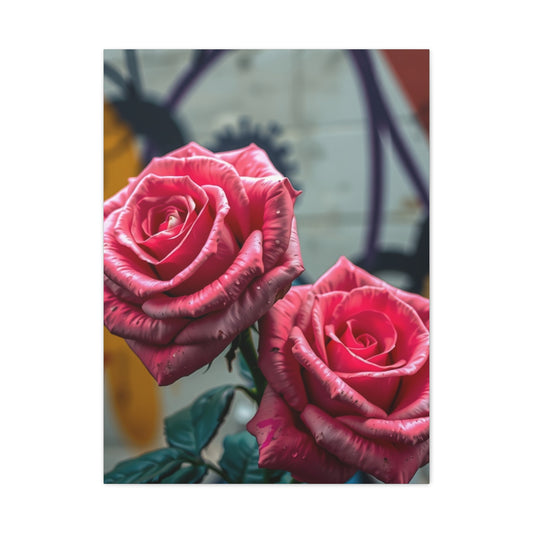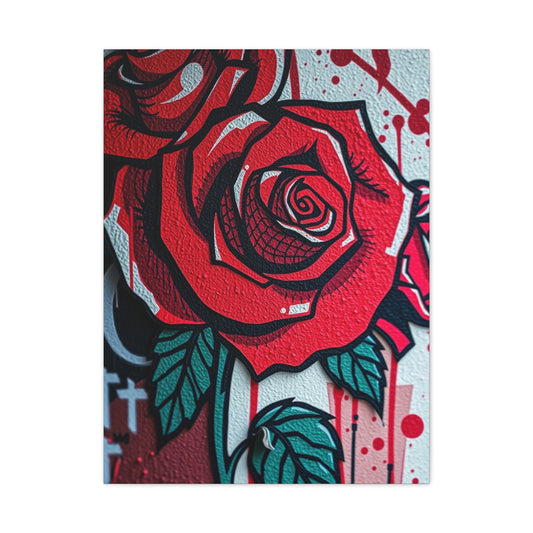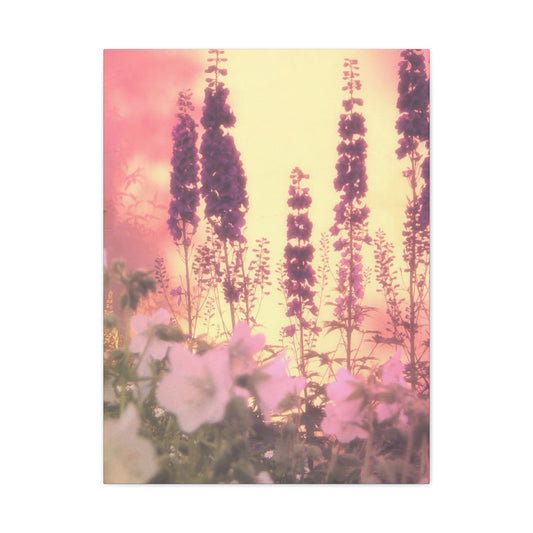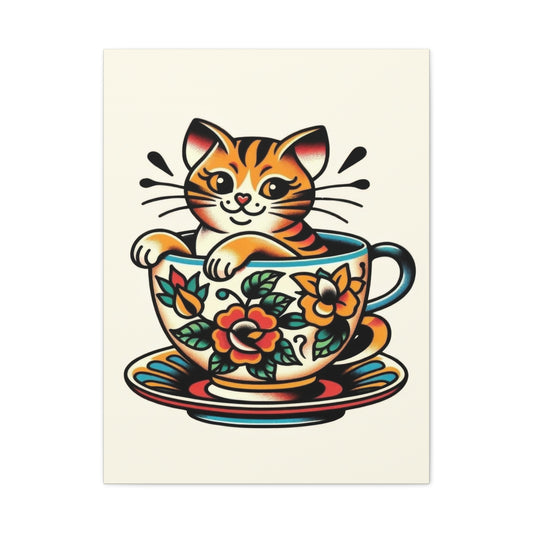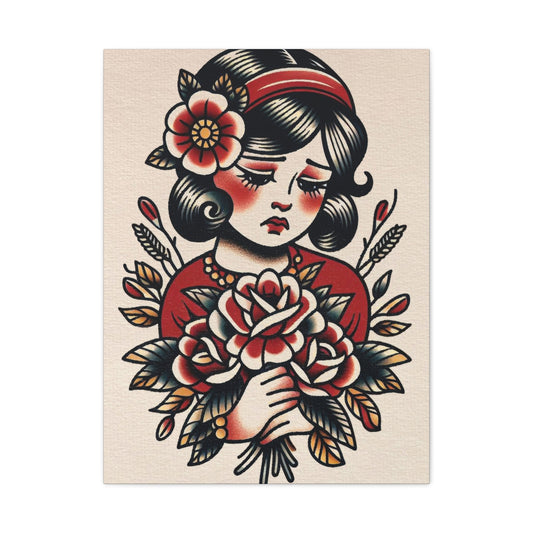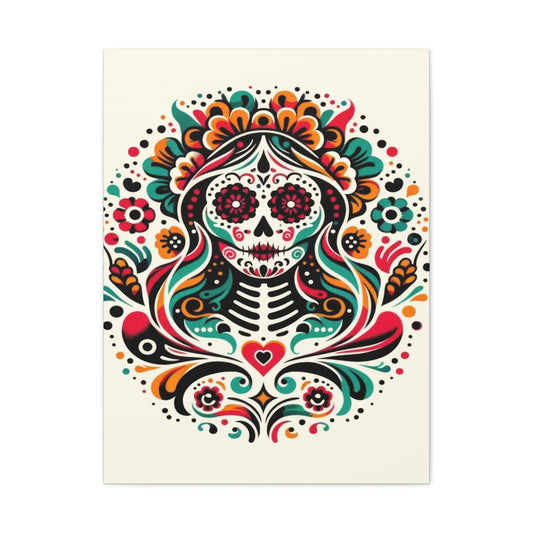Blooming Interiors with Floral Wall Art: Transform Your Home
If your home has begun to feel insipid or lacking character, floral wall art can serve as a transformative element, infusing vitality and charm into your living space. Beyond mere decoration, floral art offers a conduit for emotional resonance, creating a sense of serenity, vibrancy, or even audacious drama depending on the style chosen. From sweeping canvases that command attention to subtle, nuanced prints that whisper sophistication, the right floral artwork can redefine the ambience of any room.
Flowers have long symbolized renewal and beauty, and incorporating them into home décor evokes a connection to nature. Their presence can subtly influence mood and perception, fostering a sense of tranquillity or stimulating energy. Contemporary interior design increasingly embraces this concept, recognizing floral wall art not only as an aesthetic choice but as a method to cultivate harmony and personality within a space.
Understanding the Emotional Impact of Floral Artwork
The psychology of floral imagery is fascinating and multifaceted. Bright, vividly hued blooms can instantly invigorate a room, making spaces feel more expansive and welcoming. Conversely, soft, muted florals imbue calmness, providing a gentle contrast to modern minimalist interiors. Even abstract representations of flowers have their emotional vocabulary, with sweeping brushstrokes or geometric interpretations stimulating curiosity and engagement.
Integrating floral wall art is a subtle form of visual storytelling. Each flower species carries its own symbolism: roses evoke passion and romance, lilies connote purity, and peonies suggest prosperity and honor. When thoughtfully selected, floral artwork can communicate personal narratives or thematic motifs throughout a home, enriching the interior design beyond superficial aesthetics.
Choosing the Right Size and Scale
When considering floral art, scale is a paramount factor. Oversized canvases with dramatic floral motifs can serve as the anchor of a living room, bedroom, or hallway, commanding attention and establishing a focal point around which other décor elements revolve. Such grand pieces, however, demand thoughtful placement to avoid visual clutter. Surrounding the artwork with negative space enhances its impact, ensuring that it draws the eye without overwhelming the senses.
Smaller floral pieces, in contrast, offer versatility and intimacy. They can be grouped in curated arrangements, forming cohesive clusters that guide viewers’ attention across a wall. This approach allows for experimentation with color harmonies and contrasts, providing a personalized touch to the décor. Even modest-sized prints can make a profound impact when strategically positioned above furniture, along staircases, or within gallery-style displays.
Exploring Different Styles of Floral Wall Art
Floral artwork spans a wide spectrum of stylistic interpretations, from hyper-realistic photography to abstract modern canvases. Each style carries its own unique appeal and can complement different interior themes. Photographic floral prints, for example, capture the minutiae of petals and leaves, conveying natural beauty with meticulous realism. These are particularly effective in spaces seeking to merge contemporary design with organic inspiration, creating a bridge between the built environment and the natural world.
Paintings offer an equally compelling avenue. They provide depth through texture and brushwork, allowing colors to interact in dynamic ways that transform light and shadow within a room. Traditional still life floral paintings evoke elegance and sophistication, while modern interpretations challenge conventions, presenting flowers in unexpected hues, forms, or compositions.
Abstract floral art has gained traction in recent years due to its capacity for visual intrigue and emotional ambiguity. Bold, non-literal blooms in striking colors or unusual perspectives can provoke thought and conversation, turning walls into immersive experiences. This type of art is ideal for those who appreciate ambiguity and enjoy the interplay of imagination and interpretation within their living spaces.
Integrating Floral Art into Different Rooms
The versatility of floral wall art allows it to be seamlessly incorporated into any room of the house. In the living room, large canvases with vivid colors can energize the space, complementing furniture arrangements and creating an inviting atmosphere for gatherings. Bedrooms benefit from softer floral imagery, which can cultivate relaxation and enhance intimacy through gentle, soothing palettes.
Kitchens and dining areas, often overlooked as settings for wall art, can also be enriched with floral prints. Smaller, still-life compositions or photographic canvases of fruits and blossoms can introduce a sense of freshness and vitality, making meal times more pleasurable. Even hallways and entryways, which tend to be transitional spaces, can gain personality and warmth through carefully selected floral pieces, establishing an immediate impression of style and elegance.
Harmonizing Colors and Patterns
Color harmony is critical when selecting floral artwork. Bold flowers on neutral backgrounds create contrast and drama, whereas muted tones can blend effortlessly into existing décor. Patterns within floral prints also influence perception: dense, intricate motifs generate a sense of richness and complexity, while sparse arrangements emphasize openness and minimalism.
When integrating floral art into patterned interiors, consider balance. A highly patterned wall covering paired with elaborate floral art can become visually overwhelming. In such cases, simplifying the artwork or choosing monochromatic schemes ensures cohesion. Conversely, a neutral wall offers a canvas for bold, colorful florals to truly shine, allowing the artwork to define the character of the space.
Seasonal and Timeless Appeal
Floral wall art possesses the unique ability to evoke both seasonal charm and enduring timelessness. Spring-inspired prints featuring tulips, daffodils, or cherry blossoms can inject a sense of renewal and brightness. Summer florals, bursting with sunlit hues, energize spaces, while autumnal arrangements with muted oranges, reds, and browns evoke warmth and comfort.
Beyond seasons, certain floral designs maintain universal appeal. Roses, orchids, and peonies transcend trends, offering elegance and grace that remain relevant year after year. This duality of ephemeral and perennial beauty allows floral wall art to adapt to changing interior preferences while retaining a classic foundation.
Combining Floral Art with Other Elements
Floral wall art need not exist in isolation. It can interact harmoniously with other décor elements such as mirrors, lighting, and furniture. A strategically positioned light source can highlight textures and colors, enhancing the three-dimensional quality of paintings or canvases. Mirrors opposite floral artwork can create the illusion of depth and multiply visual impact, while complementary furniture and textiles reinforce color palettes and thematic consistency.
Layering floral prints with other art forms also creates richness. For example, pairing floral canvases with abstract geometric pieces can introduce contrast and modernity, while integrating them alongside traditional portraits or landscapes preserves a more classical, curated aesthetic. Such juxtapositions allow homeowners to explore diverse expressions while maintaining cohesion throughout their interior design.
Selecting floral wall art is a deeply personal process, intertwining aesthetics, emotion, and practical considerations. By carefully considering style, scale, color, and placement, homeowners can transform their interiors into spaces that evoke beauty, comfort, and inspiration. Whether through bold, dramatic canvases or subtle, nuanced prints, floral art invites nature indoors, offering a perpetual source of visual delight and emotional resonance.
Modern Floral Wall Art: Merging Nature with Contemporary Design
Modern floral wall art represents a sophisticated approach to integrating natural motifs within contemporary interiors. Unlike traditional floral paintings, modern interpretations often focus on stylization, abstraction, or unexpected color schemes that create a harmonious yet dynamic dialogue between the artwork and its surrounding environment. The interplay between geometric forms and organic shapes in modern floral designs provides a sense of movement and energy, transforming static walls into living expressions of creativity.
One of the hallmarks of modern floral art is its versatility. These pieces can complement minimalist interiors, where clean lines and neutral palettes prevail, by introducing color, texture, and visual intrigue. Alternatively, in eclectic or maximalist settings, modern floral prints can serve as cohesive threads that tie disparate elements together, ensuring the room feels intentional rather than chaotic.
Contemporary Interpretations and Unique Perspectives
Contemporary floral wall art pushes boundaries by challenging traditional notions of form, scale, and composition. Artists experiment with surreal perspectives, exaggerated proportions, and unconventional color pairings, resulting in pieces that are at once familiar and startlingly novel. Such artwork invites viewers to reconsider their relationship with nature, offering interpretations that are both imaginative and intellectually stimulating.
A defining feature of contemporary floral prints is their adaptability to diverse interior styles. Photographic renditions, digital illustrations, and mixed-media canvases all fall under this umbrella, each contributing a distinct texture and atmosphere. These pieces can coexist with abstract sculptures, industrial furniture, or glass and metal accents, creating layered environments that feel both curated and spontaneous.
Abstract Floral Art: Evoking Emotion Through Form and Color
Abstract floral art transforms the natural world into a language of emotion and sensation. Flowers may appear as sweeping brushstrokes, fragmented shapes, or vibrant splashes of color that prioritize feeling over realism. This approach encourages viewers to engage with the artwork on a personal level, interpreting forms and colors through their own experiences and emotions.
Bold abstract pieces often become focal points in a room, drawing the eye and anchoring the design of the space. Their ambiguity allows for a multiplicity of interpretations, making them especially compelling in communal areas such as living rooms or entryways. Smaller abstract floral canvases can also provide subtle accents, adding intrigue and depth to areas like reading nooks, bedrooms, or hallways.
Vintage Floral Prints: Nostalgia and Timeless Charm
Vintage floral wall art carries a unique allure rooted in nostalgia and classical aesthetics. These pieces often feature muted tones, intricate detailing, and romantic compositions reminiscent of bygone eras. Vintage florals excel in interiors that embrace traditional, rustic, or shabby-chic styles, providing a sense of history and narrative that contemporary designs may lack.
Curating a collection of vintage floral prints can create a cohesive visual story throughout the home. Matching sets can adorn bedroom walls, while singular, larger pieces can command attention in living rooms or dining areas. The charm of vintage floral art lies in its subtlety; it can enhance a room without overwhelming it, adding sophistication and refinement through understated elegance.
Incorporating Floral Art into Small Spaces
Even compact rooms benefit from thoughtfully chosen floral wall art. In small apartments, studios, or cozy bedrooms, scale and placement are crucial. Opting for vertically oriented canvases can elongate walls, creating a sense of height, while horizontally aligned prints can visually widen a space. Smaller, delicate floral designs prevent the room from feeling congested while introducing a touch of nature.
Layering multiple small floral pieces can create visual interest without dominating the room. Arranging prints in grids or asymmetrical clusters allows for experimentation with patterns, textures, and color harmonies, enabling a personalized approach to décor that adapts to spatial constraints.
Harmonizing Floral Art with Existing Décor
Successfully integrating floral wall art requires a nuanced understanding of balance and harmony. Color coordination with furniture, textiles, and architectural elements is essential. For instance, artwork featuring deep greens and muted reds pairs beautifully with wooden furniture and earthy tones, while vibrant yellows and blues can invigorate neutral or monochromatic interiors.
Texture is another critical consideration. Canvas prints provide tactile richness, while framed works with glass surfaces offer sleek refinement. Consider how these textures interact with existing surfaces, from soft upholstery to polished metals or exposed brick, to achieve a layered, cohesive effect.
The Role of Lighting in Highlighting Floral Artwork
Lighting can dramatically enhance the impact of floral wall art. Natural light reveals subtle color variations, creating dynamic effects as sunlight shifts throughout the day. Artificial lighting, strategically positioned, can accentuate depth, highlight brushstrokes, and emphasize key elements within a piece. Track lighting, spotlights, and wall-mounted fixtures allow for precise illumination, transforming artwork into a visual anchor that draws attention and shapes the mood of the room.
Shadows and reflections also contribute to the overall experience. For textured or multi-layered pieces, angled lighting can introduce dimensionality, allowing the artwork to evolve visually as one moves through the space. In darker rooms, illuminated floral art can serve as both decoration and focal point, providing warmth and vibrancy in otherwise subdued environments.
Blending Realism and Imagination
Floral wall art often straddles the line between realism and imagination. Photographic or hyper-realistic prints capture the intricate beauty of petals, stems, and blossoms, bringing the natural world indoors with astonishing fidelity. These pieces are ideal for creating a sense of calm, connecting inhabitants with nature, or complementing contemporary interiors that value clarity and precision.
Conversely, imaginative interpretations, whether abstract, surreal, or modern, offer a departure from the literal, inviting contemplation and emotional engagement. By mixing realistic and interpretive floral artwork, homeowners can achieve a layered aesthetic that balances familiarity with innovation, creating spaces that are both comforting and visually stimulating.
Floral Wall Art as a Tool for Mood Enhancement
The presence of flowers in art has long been associated with psychological benefits. Viewing floral imagery can reduce stress, stimulate creativity, and foster a sense of well-being. Bright and lively blooms evoke energy and positivity, while subtle, cool-toned flowers can promote relaxation and serenity. Incorporating floral wall art strategically allows homeowners to shape the emotional climate of their interiors, tailoring spaces to support desired activities and moods.
For instance, living areas designed for social interaction benefit from vibrant, energetic florals, while bedrooms intended for rest and rejuvenation are better complemented by muted or calming floral compositions. Even transitional spaces like hallways or staircases can be imbued with mood-enhancing qualities through thoughtfully selected floral prints.
Creating Visual Narratives with Floral Collections
A single floral piece can be compelling, but curated collections provide a narrative dimension to interior design. Grouping multiple artworks—whether through color, theme, or style—can convey a story, celebrate seasonal change, or highlight artistic evolution. Arranging floral art in series or clusters encourages visual exploration and invites viewers to linger, appreciating subtleties that may go unnoticed in isolation.
Layered arrangements also allow for experimentation with scale, perspective, and framing. Combining large statement canvases with smaller complementary prints creates rhythm and movement, guiding the eye naturally across walls and fostering a cohesive yet dynamic aesthetic.
Modern and contemporary floral wall art transcends mere decoration, functioning as both an emotional conduit and a design statement. From bold abstractions to vintage-inspired elegance, these pieces offer endless possibilities for self-expression and interior enhancement. By carefully considering style, scale, color, and placement, homeowners can craft environments that are visually striking, emotionally resonant, and deeply personalized. Floral art, in all its diversity, remains an enduring medium through which nature and imagination intersect, enriching interiors with beauty, texture, and meaning.
Still Life Floral Art: Capturing the Serenity of Nature
Still life floral art has a timeless allure, capturing the delicate interplay of light, shadow, and color that characterizes the natural world. These compositions often depict flowers in vases, gardens, or natural arrangements, providing a contemplative and serene quality that enhances interior spaces. Still life pieces work exceptionally well in rooms designed for relaxation, reflection, or quiet gathering, such as living rooms, dining areas, or bedrooms.
The appeal of still life floral art lies not only in its visual beauty but also in its narrative potential. Each arrangement tells a subtle story through the positioning of blooms, the choice of vessels, and the interaction of colors and textures. Viewers are invited to pause and appreciate details that might otherwise go unnoticed, creating a sense of mindfulness and connection with nature.
Photographic Floral Prints: Realism Meets Elegance
For those who seek an authentic representation of nature, photographic floral wall art offers precise detail and lifelike color. High-resolution prints capture the intricacies of petals, dew, and foliage, bringing the natural world into the home with remarkable clarity. Photographic florals are particularly effective in contemporary or minimalist interiors, where they provide organic contrast against sleek surfaces and neutral tones.
Photography also allows for creative exploration of perspective, depth, and lighting. Macro shots highlight textures invisible to the naked eye, while wide-angle compositions can evoke a sense of expansiveness and immersion. Framing these images or mounting them on large canvases transforms photographic florals into focal points that command attention while maintaining a subtle elegance.
Seasonal Themes in Floral Wall Art
Floral wall art can reflect the rhythms of nature, aligning with seasonal changes to evoke mood and atmosphere. Spring-inspired pieces, featuring tulips, cherry blossoms, or daffodils, introduce a sense of renewal and freshness, perfect for invigorating interiors after the winter months. Summer florals, with their vibrant colors and abundant petals, add energy and warmth, creating a lively environment for social gatherings.
Autumnal floral prints, characterized by muted oranges, deep reds, and golden yellows, evoke coziness and nostalgia, complementing rich textures and wood tones. Winter-inspired florals, though less common, utilize subtle whites, blues, and greens to convey calm, stillness, and understated elegance. By rotating or curating seasonal floral art, homeowners can maintain a dynamic, evolving interior that feels attuned to the natural world.
Harmonizing Floral Art with Interior Design
Integrating floral wall art into a cohesive interior design requires careful consideration of color, scale, and texture. Bold, colorful pieces stand out against neutral walls, while softer, muted prints harmonize with pastel tones or earthy palettes. The arrangement of furniture, textiles, and accessories should complement the artwork, creating balance and preventing visual dissonance.
Textures in floral artwork, such as the tactile quality of canvas or the smoothness of photographic prints, interact with room surfaces to enhance depth and interest. In a room with polished wood, metal accents, or sleek furniture, a textured floral canvas can provide warmth and contrast. Conversely, glossy prints or glass-framed photography may harmonize with contemporary, minimalist interiors, reinforcing clean lines and sophistication.
Curating a Floral Wall: Grouping and Layering
One of the most effective ways to incorporate floral wall art is through curated groupings. Arranging multiple pieces—whether by color, style, or theme—creates a narrative and encourages visual exploration. For example, a series of small still life prints can be displayed as a grid or asymmetrical cluster, adding rhythm and cohesion to a wall without overwhelming the space.
Layering artworks of varying sizes also enhances depth. A large statement piece can serve as the anchor, while smaller complementary prints surround it, creating a balanced composition. This technique allows homeowners to experiment with scale, perspective, and thematic storytelling, transforming walls into immersive and dynamic canvases.
Floral Art in Unconventional Spaces
Floral wall art is not limited to traditional rooms. Bathrooms, entryways, hallways, and even home offices can benefit from the presence of floral prints. In bathrooms, water-resistant or laminated prints introduce freshness and elegance. Entryways adorned with floral art create an inviting first impression, setting the tone for the rest of the home.
Hallways, often overlooked, can gain personality and interest through linear arrangements or rhythmic repetition of floral prints. In workspaces, floral art can boost mood, creativity, and productivity, offering visual respite and inspiration amidst functional environments. The adaptability of floral art ensures that virtually any space can be transformed with thoughtful placement and style selection.
Color Psychology in Floral Wall Art
The colors within floral artwork wield considerable influence over the atmosphere of a room. Warm tones, such as reds, oranges, and yellows, generate energy and vibrancy, encouraging social interaction and liveliness. Cool tones, including blues, greens, and purples, foster relaxation, tranquility, and introspection. Neutral tones, often found in muted florals, offer subtle elegance and versatility, harmonizing with diverse interior palettes.
Strategic use of color within floral wall art allows homeowners to tailor the emotional climate of a space. A living room designed for entertaining may feature energetic reds and yellows, while a bedroom intended for rest may lean toward soft greens, lavenders, or whites. The interplay of color, texture, and composition ensures that floral art contributes both aesthetically and emotionally to a home’s environment.
Seasonal Rotations and Dynamic Displays
To maintain freshness and seasonal resonance, homeowners may consider rotating floral wall art throughout the year. Swapping spring blossoms for summer blooms, autumnal leaves, or winter whites can refresh the interior without major renovations. Dynamic displays allow the home to evolve with natural cycles, reinforcing a connection to the environment and offering visual variety that sustains interest and engagement.
Mixing Styles: Traditional Meets Modern
Floral wall art need not adhere to a single style. Combining traditional still life prints with contemporary or abstract pieces creates layered interiors that feel curated and sophisticated. Juxtaposing realism with abstraction encourages visual dialogue, where the naturalistic merges with the interpretive, enhancing depth and complexity.
Such eclectic approaches can also integrate with broader design elements, including furniture, textiles, and lighting. A traditional floral print may echo the warmth of wooden furnishings, while a bold abstract canvas resonates with metallic accents or minimalist décor. Thoughtful combinations allow for a harmonious yet dynamic home environment, reflecting personal taste and creativity.
Enhancing Small Spaces with Floral Art
In compact rooms, floral wall art can create the illusion of expansiveness or height. Vertical compositions elongate walls, while horizontal arrangements broaden the perception of space. Smaller, delicately detailed prints prevent visual congestion while introducing natural elements, making them ideal for apartments, studios, or bedrooms with limited square footage.
Grouping multiple small pieces in curated clusters or gallery-style arrangements allows homeowners to maximize visual impact without overwhelming the room. This approach provides flexibility, enabling rotation or replacement of pieces to reflect changing moods, seasons, or personal preferences.
Lighting and Placement Considerations
Effective lighting enhances the impact of floral wall art. Natural sunlight emphasizes subtle hues and textures, creating dynamic interplay across canvases or framed prints. Artificial lighting, such as spotlights or wall-mounted fixtures, allows precision illumination, highlighting details and adding dimensionality.
Placement is equally important. Eye-level positioning ensures optimal viewing, while strategic spacing prevents overcrowding. Large pieces may anchor furniture or architectural features, while smaller prints can punctuate transitional areas, providing visual interest and continuity throughout a home.
Creating Harmony with Surrounding Elements
Floral wall art interacts with other design elements to produce cohesive interiors. Coordinating colors in textiles, rugs, and furniture reinforces thematic continuity. Contrasting textures—such as a smooth metal console beneath a textured floral canvas—add depth and intrigue. Layering floral art with mirrors, lighting, and decorative accessories further enhances visual richness, ensuring the artwork contributes holistically to the space rather than appearing isolated.
Still life, photographic, and seasonally inspired floral wall art offer diverse ways to enrich interiors. By carefully considering scale, color, style, and placement, homeowners can transform ordinary walls into engaging, emotive, and dynamic environments. Floral art, in its myriad forms, continues to be a timeless tool for connecting with nature, expressing personal taste, and elevating the ambiance of any home.
Large and Bold Floral Wall Art: Making a Statement
Large floral wall art is a striking way to anchor a room and create an immediate focal point. Oversized canvases or framed prints with dramatic blooms draw the eye and establish a sense of grandeur, particularly in expansive living rooms, open-plan areas, or entryways. The scale of these pieces allows for intricate details and vibrant colors to come alive, transforming plain walls into dynamic landscapes.
When incorporating bold floral art, balance is essential. Surrounding the piece with negative space ensures that it remains the centerpiece, rather than competing with other elements. Large prints pair exceptionally well with minimalist furniture, neutral walls, or open interiors, allowing the artwork to breathe and dominate the visual experience.
Framing Techniques and Presentation
The presentation of floral artwork influences its impact and style. Framed prints offer structure and formality, making them suitable for traditional or vintage-inspired interiors. Frames can vary from ornate, gilded styles to simple, understated designs, each altering the mood conveyed by the floral composition.
Canvas prints, by contrast, emphasize texture and depth, providing a more contemporary, tactile experience. Gallery-wrapped canvases extend the image around the edges, allowing for unframed display that feels modern and immersive. The choice of framing or mounting depends on the intended ambiance, size of the artwork, and compatibility with existing décor.
Curating Collections of Floral Art
Grouping multiple floral pieces allows for storytelling and thematic cohesion within a room. Collections can vary by size, color, or style, creating rhythm and visual interest. For instance, a series of small canvases featuring complementary flower types can form a harmonious grid, while mixing large and medium-sized pieces introduces variation and depth.
Curated collections encourage personal expression and experimentation. Homeowners can rotate pieces seasonally, blend traditional and modern works, or juxtapose realism with abstraction. Thoughtful curation ensures that floral art feels intentional, integrated, and reflective of individual taste rather than haphazardly placed.
Abstract Floral Designs: Imagination in Bloom
Abstract floral wall art transforms natural motifs into expressive interpretations. Through unconventional colors, exaggerated forms, or fragmented compositions, these pieces invite contemplation and emotional engagement. Abstract florals provide versatility, blending seamlessly with modern, eclectic, or minimalist interiors, and offering visual intrigue without adhering strictly to realism.
These designs excel as conversation starters, allowing viewers to interpret shapes, textures, and color combinations in personal ways. Large abstract canvases can dominate a room, while smaller prints offer subtle accents, enhancing corners, nooks, or transitional spaces with creative flair.
Unconventional Approaches to Floral Art
Beyond traditional, still life, and abstract forms, floral wall art can take unexpected directions. Digital illustrations, mixed-media pieces, and experimental techniques challenge conventional representation, producing work that is both imaginative and distinctive. Incorporating such pieces introduces individuality and modernity, particularly in urban apartments, contemporary homes, or spaces seeking originality.
These unconventional designs often interact with light, texture, and spatial perspective uniquely. Metallic inks, layered canvases, or sculptural elements can create depth and dimensionality, allowing the artwork to evolve visually as one moves through the room. The result is an ever-changing visual experience that keeps interiors lively and engaging.
Harmonizing Floral Art with Interior Elements
Integrating floral wall art successfully requires attention to surrounding elements. Coordinating with furniture, textiles, and decorative accents creates cohesion, while contrasting colors or textures can enhance visual impact. For instance, a large, colorful floral canvas can energize a monochromatic room, while smaller, muted prints harmonize with richly patterned walls or textiles.
Floral art also interacts with architectural features. Positioning artwork above consoles, mantels, or beds can create natural focal points, while vertical arrangements accentuate height and horizontal layouts emphasize breadth. Thoughtful placement ensures that floral prints complement the structure and function of the space, enhancing both aesthetics and atmosphere.
Lighting Strategies for Floral Artwork
Lighting significantly influences the perception of floral wall art. Natural light accentuates subtle color gradients and textures, creating dynamic effects throughout the day. Artificial lighting, including adjustable track lights or wall-mounted fixtures, can focus attention on key areas, highlight details, and enhance three-dimensionality.
For textured canvases or layered prints, angled lighting emphasizes depth and shadows, enriching the tactile experience. In darker rooms, illuminated floral art serves as a vibrant centerpiece, adding warmth and visual intrigue. Lighting choices should align with both practical functionality and the emotional tone desired for the space.
Integrating Floral Art into Personal Style
Floral wall art is a versatile medium that accommodates diverse personal styles. Traditional interiors benefit from classic still life prints, vintage-inspired canvases, or ornate frames. Modern and contemporary homes thrive with abstract, large-scale, or digitally illustrated florals. Even eclectic or bohemian spaces can incorporate florals through layered arrangements, unconventional compositions, and vibrant colors.
The key is to select pieces that resonate emotionally while complementing existing décor. Floral art can enhance architectural features, accentuate furniture, or establish a visual rhythm, ensuring a cohesive and inviting environment. Its adaptability makes it suitable for almost any room, from bedrooms and living areas to hallways, offices, and even bathrooms.
The Role of Texture and Material
Texture adds a sensory dimension to floral wall art. Canvas, wood, metal, and mixed-media surfaces each create distinct effects, influencing how light interacts with the artwork and how it is perceived. Canvas provides a soft, painterly quality, ideal for traditional or contemporary prints. Metal or acrylic prints offer gloss, reflection, and modernity, while wooden panels evoke warmth and natural charm.
Experimenting with materials allows homeowners to reinforce thematic choices, whether aiming for elegance, boldness, or subtlety. Textural variation also enhances layered arrangements, giving depth and dimension to collections of floral pieces.
Bringing Nature Indoors
Ultimately, floral wall art serves as a bridge between interior spaces and the natural world. It introduces organic shapes, colors, and textures, fostering emotional resonance, aesthetic beauty, and sensory engagement. From large statement pieces to subtle accents, from traditional still life to abstract innovation, floral artwork transforms walls into living canvases, enriching homes with vitality, character, and timeless appeal.
By thoughtfully selecting, curating, and positioning floral prints, homeowners can create interiors that are harmonious, dynamic, and deeply personal. Each piece, whether bold and dramatic or delicate and understated, contributes to an environment where nature, art, and design converge, offering perpetual inspiration and enduring visual delight.
Conclusion
Floral wall art is more than decorative embellishment; it is an enduring expression of beauty, emotion, and personal style that has the power to transform any interior space. From bold, oversized canvases that command attention to subtle, delicate prints that enhance a room’s ambiance, floral art offers an extraordinary range of possibilities. Each piece, whether a traditional still life, a vibrant photographic print, a modern abstract composition, or a vintage-inspired creation, contributes uniquely to the mood, character, and visual narrative of a home.
The versatility of floral artwork lies not only in its diverse forms but also in its capacity to harmonize with varying design philosophies. In contemporary and modern interiors, abstract or stylized florals inject energy, creativity, and dynamism, serving as focal points that guide the eye and define the space. For those who cherish classic elegance, still life and vintage floral prints provide timeless charm, nostalgia, and refined sophistication. Even small or unconventional spaces benefit from thoughtfully chosen floral art, which can enhance spatial perception, introduce natural motifs, and create an intimate or expansive atmosphere depending on scale, placement, and composition.
Color, texture, and lighting are essential tools in elevating the impact of floral wall art. Vibrant hues energize a space, muted tones encourage calm and reflection, and the interplay of textures—whether canvas, wood, metal, or mixed media—adds depth and dimensionality. Strategic lighting further enhances these effects, highlighting intricate details, emphasizing three-dimensionality, and creating dynamic interplay between the artwork and its surroundings. Through careful consideration of these elements, homeowners can ensure that floral art becomes a cohesive and integral part of the interior rather than merely an ornamental addition.
Curating collections of floral artwork allows for storytelling and continuity throughout a home. Combining large statement pieces with smaller complementary prints or mixing traditional and abstract styles creates rhythm, movement, and layered visual interest. Seasonal rotations of floral art can further enliven interiors, reflecting natural cycles and infusing homes with fresh energy while maintaining a timeless aesthetic.
Ultimately, floral wall art connects indoor spaces with the natural world, fostering emotional resonance, aesthetic pleasure, and a sense of harmony. Its adaptability, emotional impact, and visual richness make it a perennial favorite for interior design enthusiasts seeking to personalize and elevate their environments. By thoughtfully selecting, placing, and curating floral artwork, any home can be transformed into a sanctuary of beauty, creativity, and inspiration, where each bloom, color, and composition contributes to a lasting, uplifting experience. Floral art is not merely decoration—it is a celebration of nature, imagination, and enduring elegance, offering homeowners a medium through which personal expression and timeless beauty converge.

